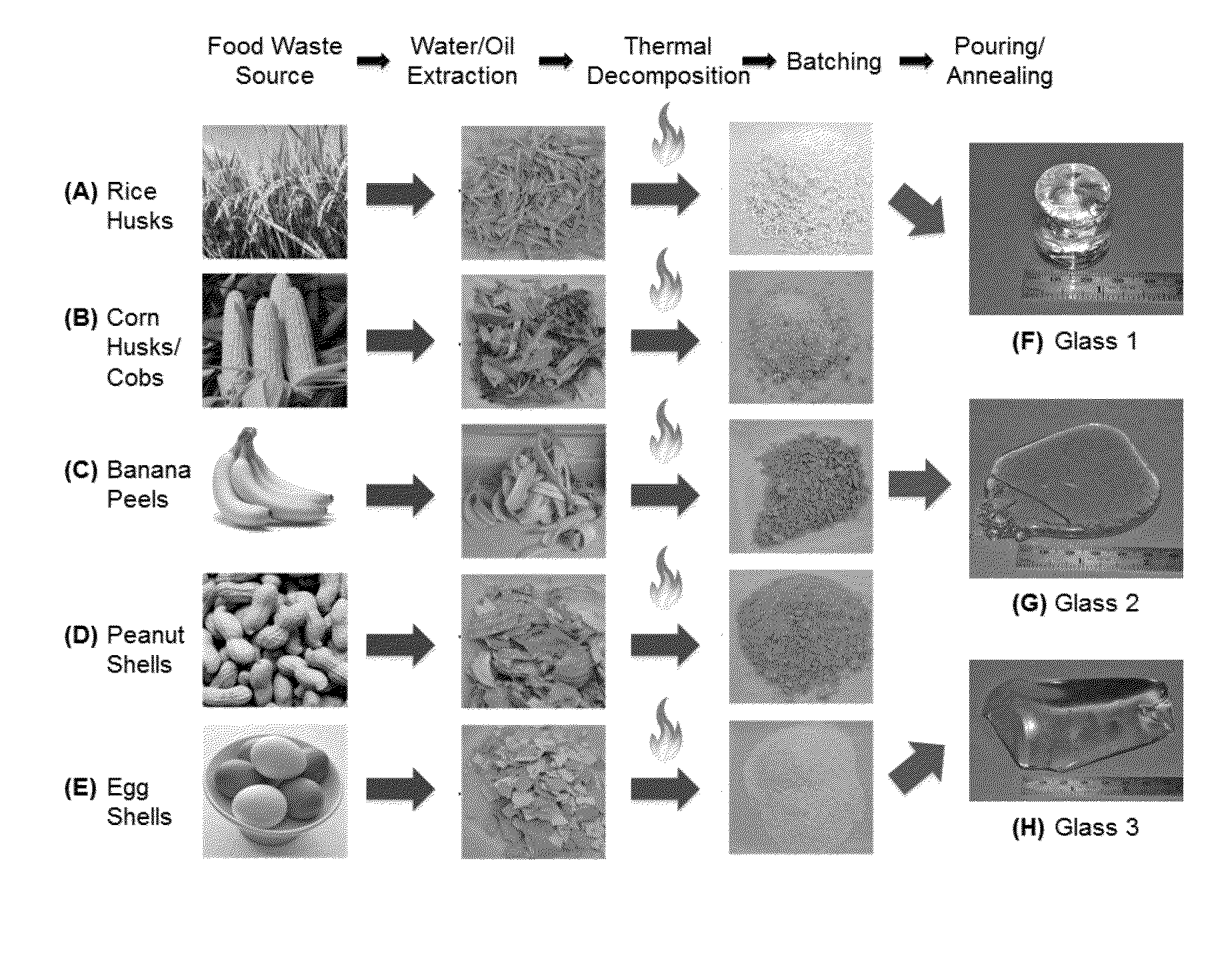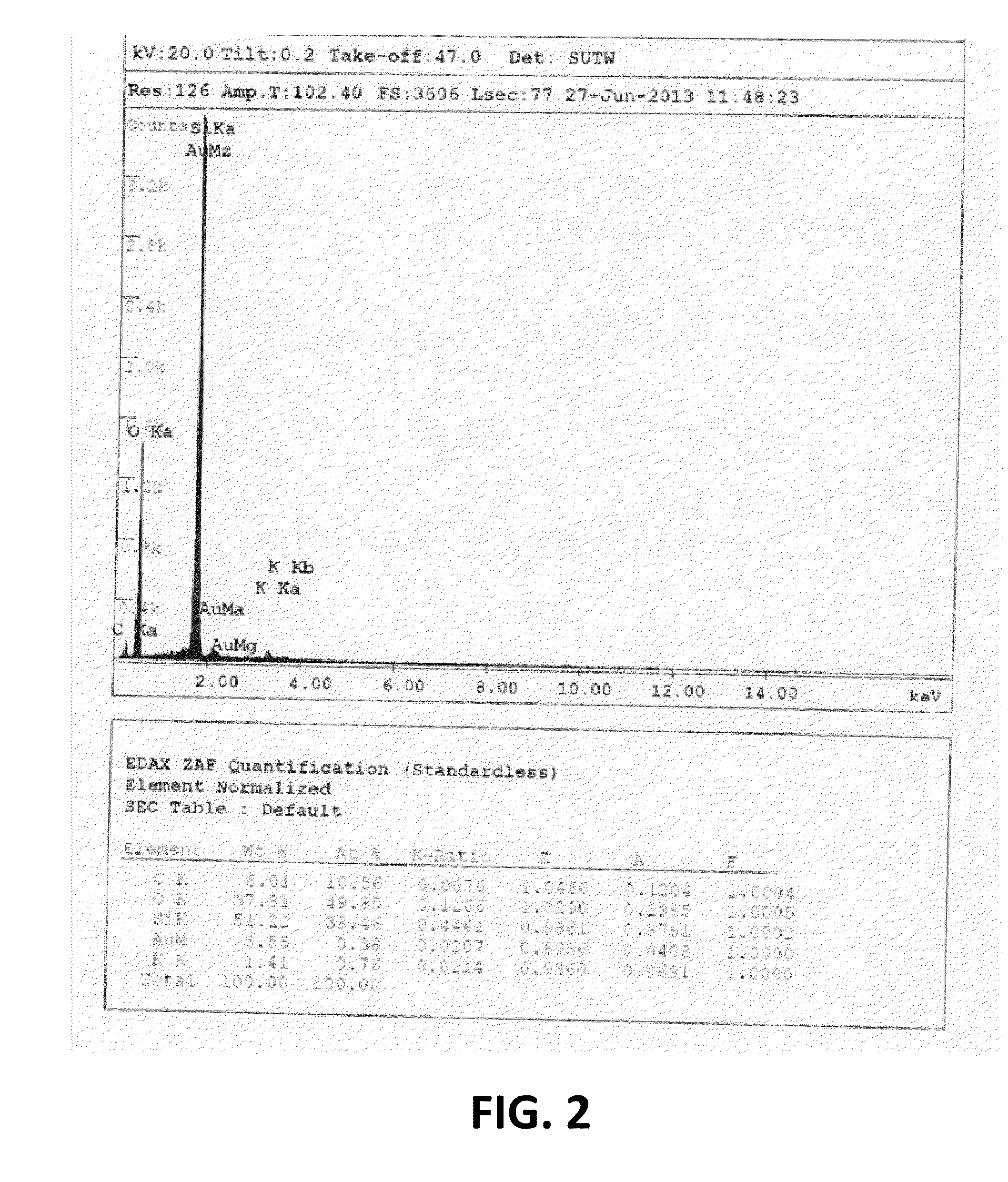Methods of making glass from organic waste food streams
- Summary
- Abstract
- Description
- Claims
- Application Information
AI Technical Summary
Benefits of technology
Problems solved by technology
Method used
Image
Examples
example 1
Exemplary Glass Compositions
[0091]Table 2 illustrates five exemplary glass compositions that were manufactured by the invention, and the final compositions analyzed by XRF. All values listed in Table 2 are approximate. Glass 1 resembles a typical soda-lime tableware glass composition. In addition to rice husk and egg shells, sodium chloride (as table salt) and alumina powder were added to obtain the soda-lime glass composition. Glass 2 is a calcium-potassium silicate glass composition that was made using only rice husk, egg shells, and banana peels, and does not contain any commercial additives mined and extracted from conventional sources. Glass 3 is a generic multicomponent, ion-exchangeable glass system that was produced using multiple sources of organic waste as raw materials: rice husk, eggshells, peanuts shells and membranes, and corn husk and cobs. Glass 4 is also a generic ion-exchangeable potassium-sodium alumino silicate multicomponent glass with alumina and NaCl additions...
PUM
| Property | Measurement | Unit |
|---|---|---|
| Temperature | aaaaa | aaaaa |
| Temperature | aaaaa | aaaaa |
| Temperature | aaaaa | aaaaa |
Abstract
Description
Claims
Application Information
 Login to View More
Login to View More - R&D
- Intellectual Property
- Life Sciences
- Materials
- Tech Scout
- Unparalleled Data Quality
- Higher Quality Content
- 60% Fewer Hallucinations
Browse by: Latest US Patents, China's latest patents, Technical Efficacy Thesaurus, Application Domain, Technology Topic, Popular Technical Reports.
© 2025 PatSnap. All rights reserved.Legal|Privacy policy|Modern Slavery Act Transparency Statement|Sitemap|About US| Contact US: help@patsnap.com



